Meadowlark
Well-known member
- Location
- East Texas
- Hardiness zone
- 9a
Hugenkultur Container Gardening Part 2: Production
Hugenkultur Container Gardening Part 3: Selected Photos
If you don’t have a lot of space, want to save on the costs of potting soil, and/or can benefit from reduced weight portability, then Hügelkultur (Hk) containers may be for you. In this thread, I’ll demonstrate how easy it is to construct the containers and in part 2 will demonstrate the productivity of using them.
Materials:
1) the containers used are old empty cattle protein tubs with drainage holes added. Cost: Zero, utilization of existing material
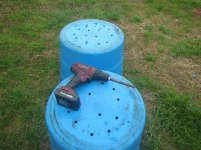
2) one of the beauties of this approach is material is generally free and readily available. The first bottom layer is made of wood debris materials. This can be found lying around generally and already started decaying is best. Cost zero, making something out of nothing
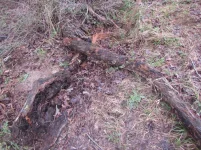
3) The material as shown above is easily broken up and added to the containers as the first (bottom) layer. I like to fill the container to about 1/3 using the decayed tree material. Zero cost.
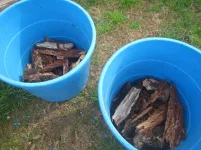
4) the second layer is finer composted mulch. This is made of leaves, pine needles, small pieces of bark all well composted and filling the next 1/3 of the container. Zero cost.
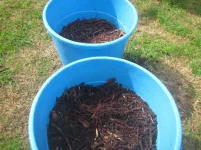
5) the third and final layer consists of good garden soil with generous well composted animal manure mixed in. This will fill the container top 1/3 leaving a few inches of clearance from the top for watering and for plant wind protection. Zero cost
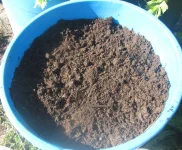
Summary: zero cost, less than 45 minutes of my time.
The original weight of these tubs filled with cattle protein was well over 200 pounds. Not something that I would like to move around without assistance/equipment.
On the other hand, the estimated weight of this container configured Hugenkultur style is approximately 55 pounds. That is something I can readily move around as needed even move indoors if needed (of course recognizing the bottom leaks). Not only is the weight reduced, but the amount of soil needed is significantly reduced saving money for those who might not have ready access to potting soil.
The volume is about 25 gallons standing at about 21 inches tall.
In the Part 2 thread, I will show you tabulated results of growing over 25 different veggies over the spring/summer growing season and the fall/winter growing season.
Hugenkultur Container Gardening Part 3: Selected Photos
If you don’t have a lot of space, want to save on the costs of potting soil, and/or can benefit from reduced weight portability, then Hügelkultur (Hk) containers may be for you. In this thread, I’ll demonstrate how easy it is to construct the containers and in part 2 will demonstrate the productivity of using them.
Materials:
1) the containers used are old empty cattle protein tubs with drainage holes added. Cost: Zero, utilization of existing material

2) one of the beauties of this approach is material is generally free and readily available. The first bottom layer is made of wood debris materials. This can be found lying around generally and already started decaying is best. Cost zero, making something out of nothing

3) The material as shown above is easily broken up and added to the containers as the first (bottom) layer. I like to fill the container to about 1/3 using the decayed tree material. Zero cost.

4) the second layer is finer composted mulch. This is made of leaves, pine needles, small pieces of bark all well composted and filling the next 1/3 of the container. Zero cost.

5) the third and final layer consists of good garden soil with generous well composted animal manure mixed in. This will fill the container top 1/3 leaving a few inches of clearance from the top for watering and for plant wind protection. Zero cost

Summary: zero cost, less than 45 minutes of my time.
The original weight of these tubs filled with cattle protein was well over 200 pounds. Not something that I would like to move around without assistance/equipment.
On the other hand, the estimated weight of this container configured Hugenkultur style is approximately 55 pounds. That is something I can readily move around as needed even move indoors if needed (of course recognizing the bottom leaks). Not only is the weight reduced, but the amount of soil needed is significantly reduced saving money for those who might not have ready access to potting soil.
The volume is about 25 gallons standing at about 21 inches tall.
In the Part 2 thread, I will show you tabulated results of growing over 25 different veggies over the spring/summer growing season and the fall/winter growing season.
